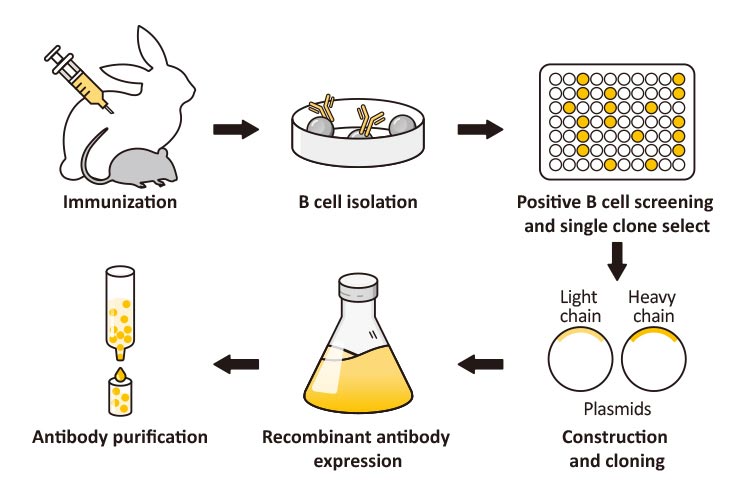Recombinant antibodies are synthetic monoclonal antibodies produced by recombinant DNA technology; an in vitro alternative to traditional hybridism-based technologies to produce monoclonal antibodies.
Recombinant antibodies are made outside of the immune system using synthetic genes and therefore do not require animal immunization for their production. You can choose for Recombinant protein expression in the Escherichia coli service in Pleasanton.

Image Source: Google
These synthetic antibodies can be used in all applications and have several advantages over conventional animal antibodies due to their high specificity, sensitivity, and reproducibility.
In recombinant DNA technology, antibody genes encoding immunoglobulin heavy and light chain fragments are enlarged by antibody-producing cells or artificially synthesized and duplicated into phage vectors.
These vectors are then introduced into an expressing host such as bacteria, yeast, or mammalian cells to produce functional antibodies.
Recombinant antibodies can be in a variety of formats including full-length immunoglobulin (Ig), monovalent antibody fragments as variable from single-stranded fragments (scFv), and antigen-binding fragments (Fab), and multimeric formats such as Diatel (dimeric scFvs) or Triangle.
The single-stranded fragment variable (scFv) is an antibody fragment consisting only of antibody binding sites. scFv is the smallest form of recombinant antibody that can still bind to the antigen and, despite removing the constant region, retains the specificity of the original Ig.
scFv is a fusion protein obtained by recombining light chain (VL) and heavy chain (VH) immunoglobulins via short peptide linkers.
It is important that the scFv fragments retain the specificity of the entire monoclonal antibody and are very easy to generate in prokaryotic expression systems because they are rarely glycosylated.
Other miniature forms of recombinant antibodies include the antigen-binding fragment (Fab), which is the antigen-binding region of the antibody consisting of two groups of variable and constant components, and multimeric formats such as Diatel (dimeric scFvs) or Triatel (trimeric scFvs).
Each of these formats can have different uses and can be used in different areas of research as well as in therapeutic applications.
For example, Fab can be used to stable proteins in organizational biology applications, and scFv wreckages, due to their small size, can be used in CAR screening or in microscopic applications.